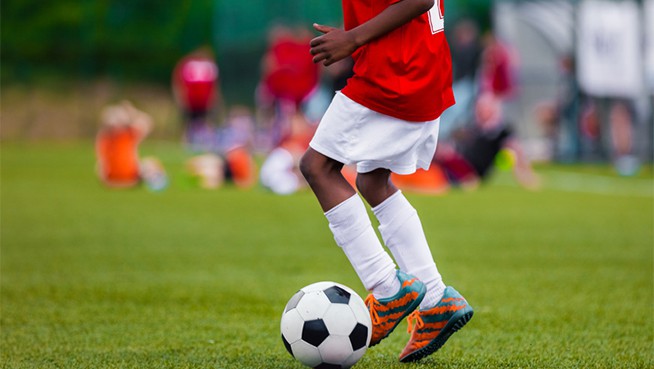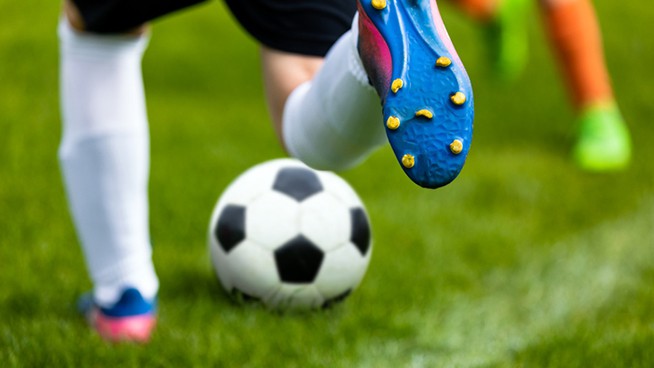Four Tips to Help You Jump Higher

Jumping is a fundamental skills all athletes need to possess. It’s a full-body movement that propels the body as far off of the ground as possible. In sports like basketball, football, volleyball and track, jumping is a major focus, but it also comes into play in other sports. Fielders must jump to catch line drives in baseball, and hockey players must leap over diving opponents to maintain balance.
Athletes in all sports should follow these four tips to maximize their jumping ability.
Load Your Legs
We rarely see someone jumping from a still position. Why? The body can’t store and release energy via the stretch shortening cycle. The process involves muscle tension stored in elastic connective tissue [fascia] and released as power in movements like jumping. To take advantage, always bend your hips and knees immediately before you jump, and transition fluidly into the upward motion.
Triple Extension
How high or far you jump comes down to physics. The more force you put into the ground, the higher or farther you will propel yourself into the air. You achieve this by activating your glutes, quads and calves in a simultaneous triple extension of the hips, knees and ankles. This coordinated movement optimizes the amount of force into the ground to increase your jump height or distance.
Arm Drive
Once your lower body propels you off the ground, jump height or distance depends on the amount of time you spend in the air. The longer you are in the air, the higher your jump. However, your work isn’t done when your legs finish moving. You must follow the triple extension in your lower body with a powerful upward arm drive to increase momentum, so that it takes longer for your body to succumb to gravity and return the ground. The result is extra height or distance on your jumps.
Training
One of the most important ways to improve your jump is to train in the weight room. Perform a combination of explosive and plyometric lifts.
Explosive lifts include Olympic Lifts [which directly mimic triple extension], as well as Squats and other lower body exercises that help you produce strength as quickly as possible. Plyometrics, on the other hand, involve little or no weight, emphasizing power production in a jumping motion, activation of the stretch shortening cycle and improvements in jumping mechanics.
To improve your jumping height with strength and plyometric training, check out the following articles.
Vertical Jump Training With Michael Jordan’s Former Trainer
Power Up Your Vert
Jump Training for Track
Vertical Leap Training With Connecticut Basketball
Photo: Getty
RECOMMENDED FOR YOU
MOST POPULAR
Four Tips to Help You Jump Higher

Jumping is a fundamental skills all athletes need to possess. It’s a full-body movement that propels the body as far off of the ground as possible. In sports like basketball, football, volleyball and track, jumping is a major focus, but it also comes into play in other sports. Fielders must jump to catch line drives in baseball, and hockey players must leap over diving opponents to maintain balance.
Athletes in all sports should follow these four tips to maximize their jumping ability.
Load Your Legs
We rarely see someone jumping from a still position. Why? The body can’t store and release energy via the stretch shortening cycle. The process involves muscle tension stored in elastic connective tissue [fascia] and released as power in movements like jumping. To take advantage, always bend your hips and knees immediately before you jump, and transition fluidly into the upward motion.
Triple Extension
How high or far you jump comes down to physics. The more force you put into the ground, the higher or farther you will propel yourself into the air. You achieve this by activating your glutes, quads and calves in a simultaneous triple extension of the hips, knees and ankles. This coordinated movement optimizes the amount of force into the ground to increase your jump height or distance.
Arm Drive
Once your lower body propels you off the ground, jump height or distance depends on the amount of time you spend in the air. The longer you are in the air, the higher your jump. However, your work isn’t done when your legs finish moving. You must follow the triple extension in your lower body with a powerful upward arm drive to increase momentum, so that it takes longer for your body to succumb to gravity and return the ground. The result is extra height or distance on your jumps.
Training
One of the most important ways to improve your jump is to train in the weight room. Perform a combination of explosive and plyometric lifts.
Explosive lifts include Olympic Lifts [which directly mimic triple extension], as well as Squats and other lower body exercises that help you produce strength as quickly as possible. Plyometrics, on the other hand, involve little or no weight, emphasizing power production in a jumping motion, activation of the stretch shortening cycle and improvements in jumping mechanics.
To improve your jumping height with strength and plyometric training, check out the following articles.
Vertical Jump Training With Michael Jordan’s Former Trainer
Power Up Your Vert
Jump Training for Track
Vertical Leap Training With Connecticut Basketball
Photo: Getty











